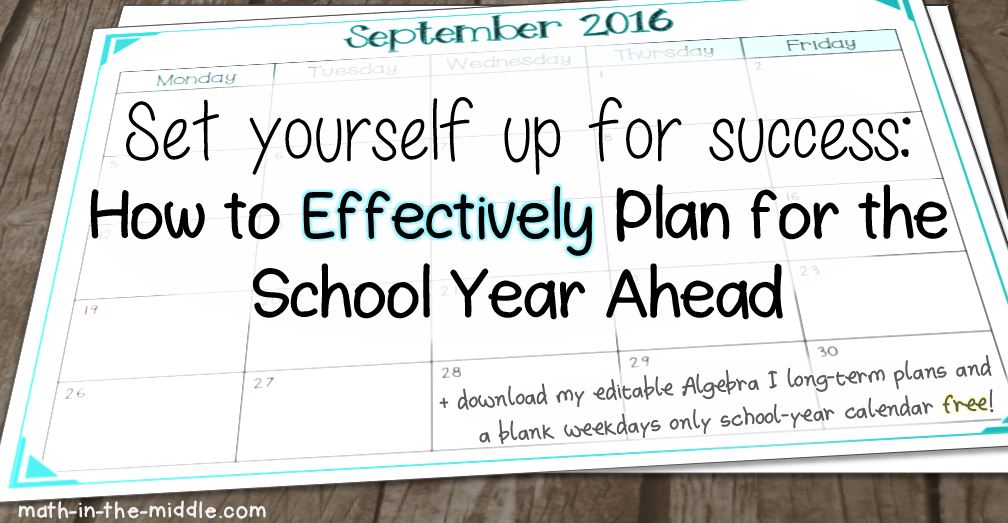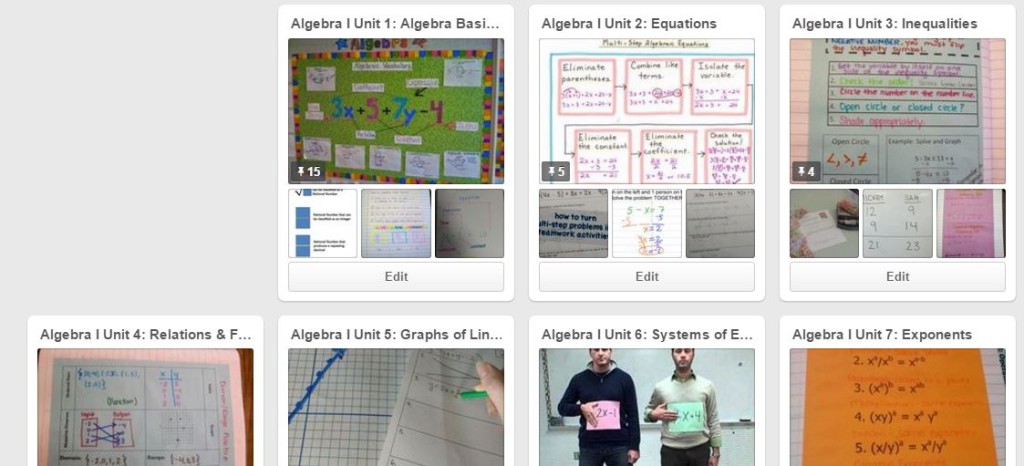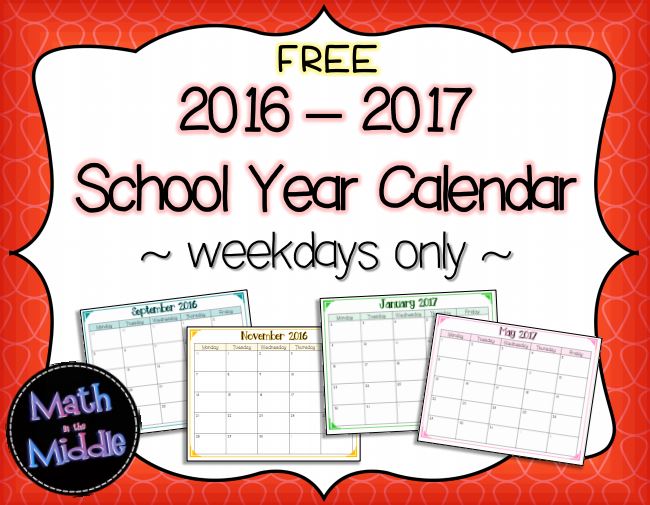I personally believe that it’s a good idea to start thinking ahead to the next school year around this time of year. I admit that I don’t normally start planning until August but this year I am getting a head start because I believe it will allow me to be much less stressed come September.
If you are looking to start planning out your year and have no idea where to start (which was me a couple of weeks ago before I just jumped in), I’ll share my process for long-term planning. The first class I worked on was Algebra I, so I’ll share that one today.
Step 1: Look over everything you need to teach and break it up into units. I try to use as few units as possible while keeping each one a manageable size. For Algebra I, I came up with 11 different units.
Step 2: Determine the order in which you want to teach those units. This can be tricky because you need to make sure that students have all the prerequisite skills for each unit and you want the year to have a good flow.
Step 3: Determine all of the different lessons that will be included in each unit and the order in which you want to teach them. This is the most time-consuming part, in my opinion, but it will save you a lot of time throughout the year if you get the whole year figured out before school starts.
Step 4: Determine an approximate length of time it will take you to teach each unit. Since my Algebra I class is an advanced class for 8th graders, I am able to move fairly quickly. Therefore, I normally plan to teach a lesson a day. I plan on 2 days for topics that I know students will find challenging. I add 3 days to the end of a unit since I typically spend 2 days on review and 1 day for the unit test.
Here is my long-term plan (scope & sequence/curriculum map) for Algebra I. Feel free to download it and edit/adjust it to meet your needs.
The next thing I did is something I should have done long ago…I organized my Pinterest boards. I love getting ideas on Pinterest but I previously put all the great teaching ideas I found on my “Math Teaching Ideas” board…and then forgot all about them. So I setup a separate Pinterest board for each Algebra I unit and moved pins from my (useless) “math teaching ideas” board onto the appropriate boards. Now when I see great Algebra ideas on pinterest or read about them on blogs, I pin them onto the board that corresponds to that unit. I forsee this being very valuable when I am actually writing my lesson plans throughout the years – I can glance through the unit Pinterest board to remind myself of all the great ideas I want to implement.
Click the picture below if you want to check out my Algebra I Units Pinterest Boards:
Step 5: (I won’t get around to this step until closer to the start of the year when I have my schedule…) Translate your estimated time frames into calendar dates. I have a blank school year calendar that is weekdays only. I write in school holidays/half days, etc. and then write in my approximate start dates for each unit based off the estimated time frames I came up with. I then adjust as necessary around long breaks like Christmas and Easter.
You can download my calendar FREE from my TpT store by clicking the image below:
There you have it…my process for writing long-term plans. I have had years when I haven’t done detailed year-long plans and years when I have done them and I can say from experience that it really does pay off to do them because it helps you have a smoother, less stressful school year when you have a map to follow.
Do you have any tips or tricks for planning out a school year? Please feel free to leave a comment sharing your ideas!
Thanks for reading,
Christina





